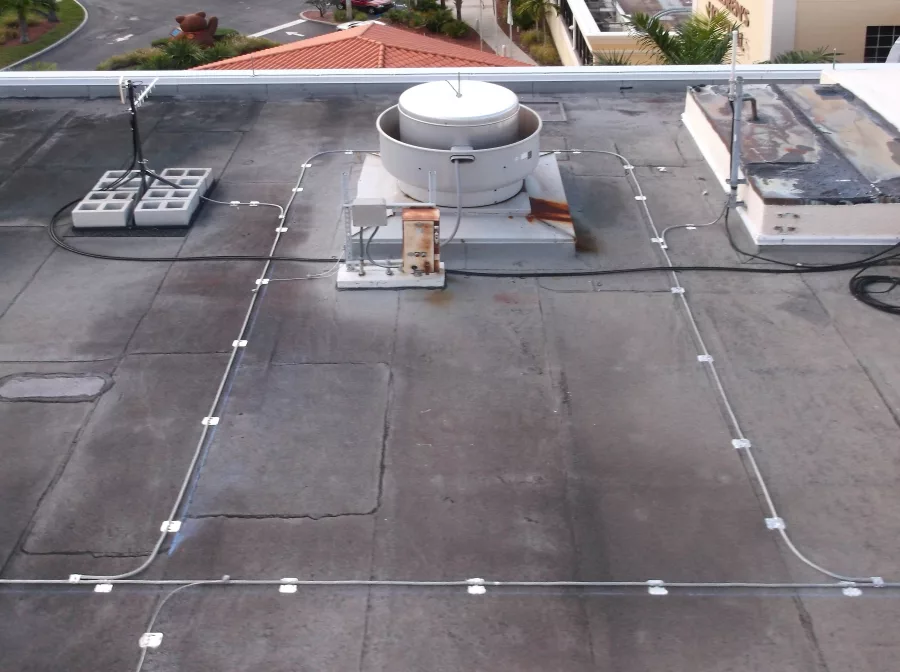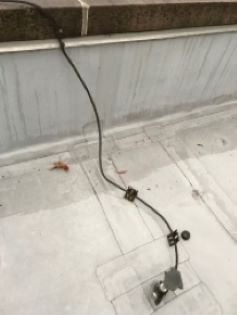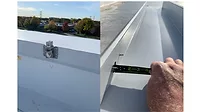Technology Collaboration
Contractor Pro Tip: Leave Installing and Disconnecting Lightning Protection to Specialists
Systems are highly specialized and the potential for damage — or worse — isn’t worth the risk

At Top: A neatly installed, standard-compliant lightning protection system. East Coast Lightning Equipment details the ins and outs of installing or retrofitting a roof where a lightning protection system exists.
— Photos courtesy of East Coast Lightning Equipment
Roofers deal with challenges on every job: Installing a watertight roofing system requires attention to every detail, from exhaust penetrations and skylights to snow retention and gutters.
No matter how good you are at providing your customers with a watertight roofing – or reroofing – system, installing, connecting and disconnecting a lightning protection system is better left to specialists.

The more significant part of any lightning protection system is installed below roof level, requiring plenty of cooperation and communication between those installing the roof, those installing rooftop equipment and the contractor.
Various components of lightning protection systems are installed before, during and after the roof installation, meaning everyone should be included in the project schedule. Lightning protection system installers are often one of the first and last trades on the jobsite.
As with all other aspects of erecting a building, guidelines and standards must be followed and installing a lightning protection system is no different. The National Fire Protection Association publishes a document governing lightning protection systems, NFPA 780, exceeding 100 pages.
The document provides lightning system installation requirements to safeguard people and property from the risk of fire and related hazards associated with lightning strikes, with specific requirements for placing fasteners, air terminals, conductors and grounding systems.
Those who install metal roofing will be familiar – or should be – with problems caused by using dissimilar metals. It’s important to know what metal materials you’re working with to prevent galvanic corrosion.
This is especially true for lightning protection systems, which use components constructed from either copper, aluminum or some combination of both metals. When dissimilar metals come into contact with electrolytes, including condensation, rainwater or other matter like oil, dirt and airborne particles, it can produce an electrochemical reaction, leading to the corrosion of one or more metals; this can produce staining or even degrade the integrity of the metal itself.
UL Standards
The Lightning Protection Institute promotes lightning protection education, awareness and safety, including certifying the installation of lightning protection systems. Underwriters Laboratories oversees product testing for lightning protection material components in the factory before shipment for listing and labeling.
UL Standard 96 addresses the minimum requirements for constructing air terminals, cable conductors, fittings, connectors and fasteners used in lightning protection systems. UL visits the East Coast Lighting Equipment manufacturing facility and other production plants quarterly to verify continued compliance.
Since lightning protection systems fall outside the scope of what is typically inspected by local officials, it is common for project specifications to call for a third-party field inspection and certification of the lightning protection system.
The Lightning Protection Institute – Inspection Program, or LPI-IP, can arrange these field inspections of completed installations by certified installing contractors.
Requirements and standards are stringent and require specific knowledge to install, uninstall or work around a lightning protection system if you expect the system to meet standards. Anyone working on the roof must also be sure not to inadvertently disconnect the lightning protection system, possibly rendering the system nonfunctional or voiding the third-party inspection.
For more information, please visit ecle.biz.
Jennifer Morgan is the director of East Coast Lighting Equipment Inc., a family-owned company established in 1984 and based in Connecticut, providing high-quality, UL-listed lightning protection system components to lightning protection design and installation contractors worldwide.
Looking for a reprint of this article?
From high-res PDFs to custom plaques, order your copy today!






